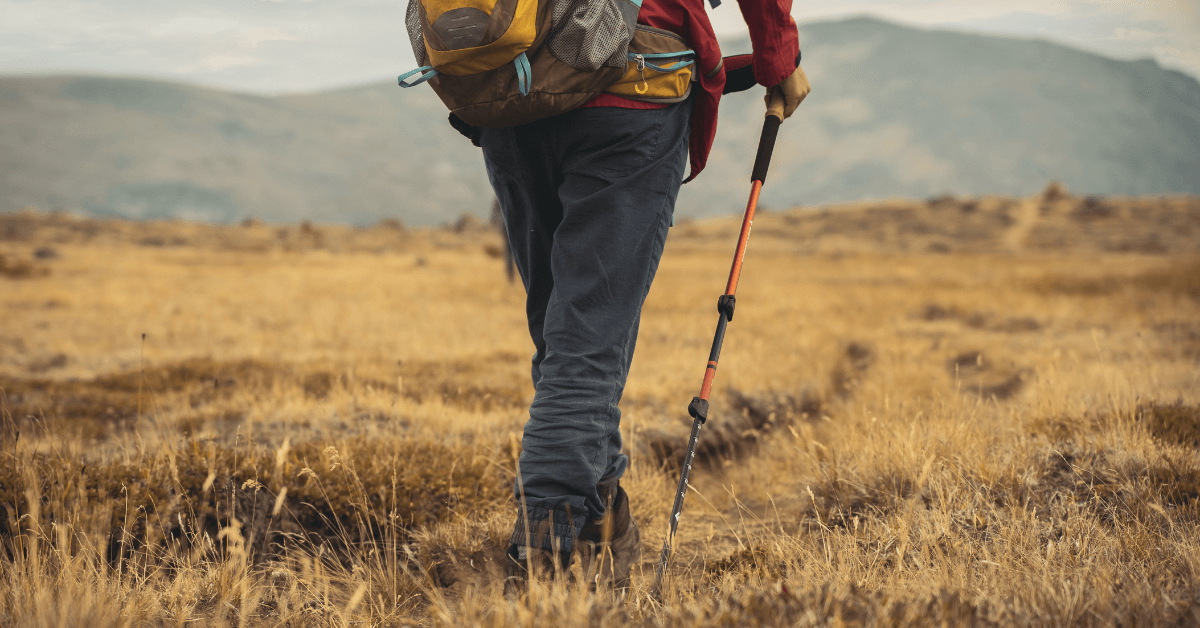Trekking poles, also known as hiking poles, are popular pieces of gear among hikers and backpackers. These sturdy poles provide additional support on uneven terrains, such as rocky trails and steep inclines. But what about flat ground? Do trekking poles provide any benefits on level terrain? In this article, I’ll answer your question, explore the pros and cons of using trekking poles on flat ground, and help you decide whether they are worth bringing on your next hike.
Now let’s jump right into it and get started.
So, Do Trekking Poles Help On Flat Ground?
Trekking poles can provide benefits on flat ground, such as reducing strain on the knees and lower back, improving balance, and allowing for faster hiking. However, whether or not to use trekking poles on flat ground is a personal decision that depends on individual needs and preferences.
Some hikers prefer not to use trekking poles on flat ground as they can be cumbersome and distracting, and may prefer alternatives such as a hiking stick or a hydration pack with built-in support. Ultimately, it’s important to consider your own needs and preferences when deciding whether or not to use trekking poles on flat ground.
The Pros of Using Trekking Poles on Flat Ground
The first and most obvious benefit of using trekking poles on flat ground is that they can help reduce the strain on your knees and lower back. Hiking for extended periods of time can take a toll on these joints, especially if you are carrying a heavy backpack. Trekking poles can provide additional support and help distribute the weight more evenly throughout your body, reducing the impact on your joints.
Another benefit of using trekking poles on flat ground is that they can help improve your balance. This is especially useful if you are hiking on uneven terrain, such as rocky or root-covered trails. Trekking poles can provide added stability and help prevent falls, which can be especially beneficial for hikers with balance issues.
Finally, trekking poles can help you hike faster on flat ground. This is because using trekking poles can help increase your stride length and allow you to take longer steps. This can help you cover more ground in a shorter amount of time and make your hike more efficient.
Related: Can You Use Hiking Poles Instead of Tent Poles?
The Cons of Using Trekking Poles on Flat Ground
While there are certainly benefits to using trekking poles on flat ground, there are also some downsides to consider. One of the main cons is that trekking poles can be cumbersome and difficult to carry when not in use. This can be especially annoying if you are hiking on a trail that is mostly flat, as you may find yourself constantly having to adjust your poles or put them away and take them out again.
Another con is that trekking poles can be distracting and take away from the natural hiking experience. Some hikers prefer to hike without any extra gear and enjoy the feeling of being fully immersed in nature. Using trekking poles can feel like a barrier between you and the natural environment.
Finally, trekking poles can be costly, and it may not be worth the investment for someone who mostly hikes on flat ground. If you are only going to use trekking poles occasionally or mostly on flat trails, it may be more cost-effective to simply use a good pair of hiking boots with excellent ankle support.
Should You Use Trekking Poles on Flat Ground?

Ultimately, whether or not to use trekking poles on flat ground is a personal decision that depends on your individual needs and preferences. If you have knee or back problems, trekking poles can provide valuable support and help reduce the strain on your joints. If you have balance issues, trekking poles can provide additional stability and help prevent falls. And if you want to hike faster and more efficiently, trekking poles can help increase your stride length.
On the other hand, if you prefer to hike without any extra gear and enjoy the natural experience, using trekking poles on the flat ground may not be for you. And if you mostly hike on flat trails and don’t want to deal with the hassle of carrying and adjusting poles, it may be more cost-effective to simply invest in a good pair of hiking boots.
In conclusion, trekking poles can provide valuable support and benefits on flat ground, but it ultimately comes down to your personal preference and hiking needs. Consider your individual needs and preferences before deciding whether or not to bring trekking poles on your next hike. And don’t forget that even if you don’t use trekking poles on flat ground, they can still be a valuable piece of gear to have on hand for when the terrain becomes more challenging.
Alternatives to Trekking Poles on Flat Ground
If you decide that trekking poles are not for you on flat ground, there are other alternatives you can consider to help reduce strain on your joints and improve your balance.
One alternative is using a hiking stick instead of trekking poles. A hiking stick is a single pole that can provide added support and balance but is often more lightweight and easier to carry when not in use.
Another alternative is using a hydration pack with a built-in support system. These packs have straps that go around your shoulders and waist, which can help distribute the weight of the pack more evenly and reduce the strain on your joints.
You can also consider ankle and knee braces. These provide additional support and can help reduce the impact on your joints.
Finally, you can also consider doing exercises and stretching before your hike to strengthen your leg muscles and improve your balance. This can help reduce the strain on your joints and improve your overall hiking performance.
So, to conclude, whether you choose to use trekking poles, a hiking stick, a hydration pack with a built-in support system, ankle and knee braces, or a combination of these options, it’s important to consider your own needs and preferences and choose the gear that will help you hike comfortably and safely on flat ground.
